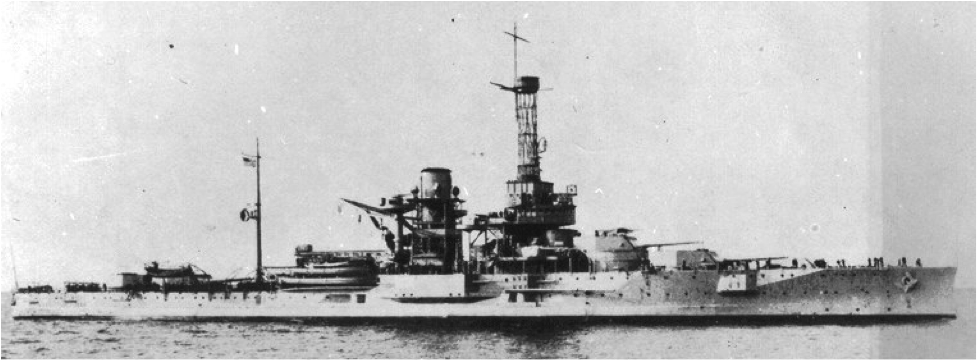Posted on July 29, 2011
Figure 1: USS Utah AG-16
First Wave of the Pearl Harbor Attack
In the first wave of the Pearl Harbor attack, 16 Japanese B5N2 Kate torpedo bombers approached Ford Island from the northwest. The western side of Ford Island is where the Lexington and Saratoga usually moored when they were in port. Although the Japanese knew that these carriers had been out of port, it made sense to send some of their torpedo planes to that side of the island first. If the Kates did not find a carrier or battleship, they could fly past Ford Island, turn around, and attack the battleships that moored on the northeast side of the island. Most did precisely that.
When the Kates reached the western side of the island, however, two crews used their torpedoes to attack the Utah, sinking her and killing 64 of her crewmen, 58 of whom were entombed in the ship when she capsized. This made little sense from a military point of view because the Utah was no longer an active battleship. The Washington Naval Treaty of 1922 resulted in ship limitations that required the Navy to turn the old Utah (commissioned in 1911) into an auxiliary ship. When that finally happened in 1931, her designation changed from BB-31 to AG-16. Her ten 12-inch guns were removed, and aircraft practiced dropping bombs on the Utah. For safety, the Utah was turned into a remote control ship for bomb practice exercises. Operators in another ship could control her movements so that there was no danger of falling bombs harming the crew. In 1941, she was given modern anti-aircraft guns and became an AA training ship as well as a target ship. To protect her guns during practice bomb drops, sensitive parts of her top-side structure were covered with long six-by-twelve inch timbers. However, when the ship began to roll after being hit, these timbers rolled loose; they impeded crew damage control and escape.
Seamen on Pearl Harbor
The seamen on Pearl Harbor tried to make sense of Utah sinking by speculating that the timbers over her most sensitive parts made the Japanese believe that she was an aircraft carrier. Obviously, this speculation was not based on any real knowledge of Japanese thinking. In addition, this explanation never made much sense. The two figures in this article show that the Utah did not look anything like an aircraft carrier. She had a high superstructure and typical battleship masts. There was no way for aircraft to take off from or land on such a ship.
After the war, interviews with Japanese participants in the Pearl Harbor raid cleared up the mystery. The Japanese fleet knew very well that the Utah was no longer a Battleship. Genda and Fuchida, who respectively planned and led the attack, ordered their men not to attack the Utah. However, one of the young pilots still mistook the Utah for an active battleship (not for an aircraft carrier) and attacked it, as did his wingman. Matsumura, who led the group of 16, was furious because the attacking Kates only had 40 torpedoes. The waste of even two was a serious matter.
Sources:
Delgado, James P., National Register of Historic Places Registration Form: USS Utah (BB-31 and AG-16), National Parks Service, 1998. This was the source of most information about the Utah, including its role as an auxiliary ship. This information is available elsewhere, but this is an exceptionally good source.
Prange, Gordon W., Goldstein, Donald M., and Dillon, Katherine V., At Dawn We Slept: The Untold Story of Pearl Harbor, New York: McGraw-Hill, 1981. This was the source of Japanese information about the sinking of the Utah. Prange and his team conducted many interviews with Japanese principals in the war.


